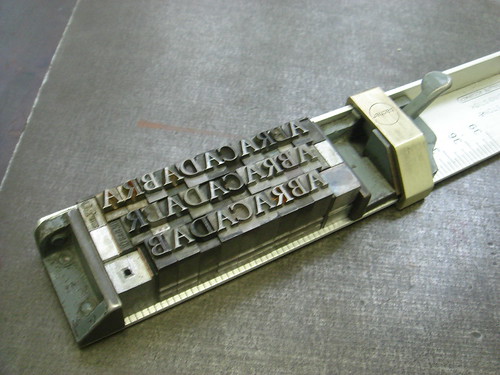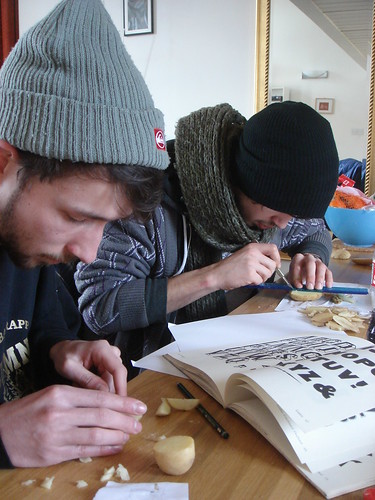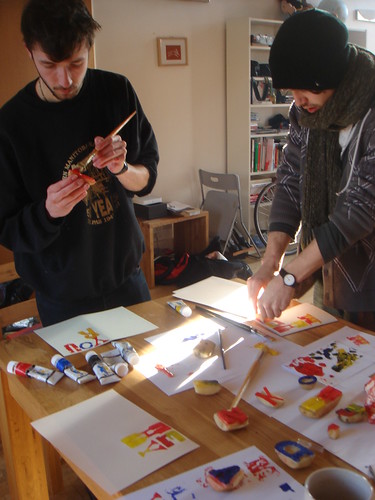
For the last two days I've been working on my first letterpress project; to print a section of De Medicina Praecpta relating to the first recorded use of the word 'Abracadabra'. What's become quickly obvious is that working with letterpress is a constant stream of compromises. For example, I wanted to set the whole thing in Garamond (to match the French historical and geographical context of the book I found the passage in), but I had to use a mixture of Baskerville, Caslon & Bell. Perhaps that's part of the modern appeal of letterpress...your tools dictate what you can achieve, whereas you are in complete control of everything when you are working with type digitally. A Flickr set of my letterpress work can be found here.
I've done some more research into the genesis of the word 'Abracadabra' and found a few interesting possibilities. For instance, it may derrive from the Aramaic 'Evra KaDabra' which means 'I will create as I speak', or the Arabic 'Abra Kadabra', which translates as 'Let the things be destroyed'. It may also derrive from the Hebrew 'Ha-brachah'; 'the blessing'. I also found a text relating Abracadabra to Hebrew inverted cone blessings here.
I also found that later in De Medicina Praecepta, Sammonicus says that the 'Abracadabra' amulet should be worn for 9 days before being hurled over the shoulder into an East flowing river. Perhaps I could do some research into water-soluble materials/paper and print onto those.







